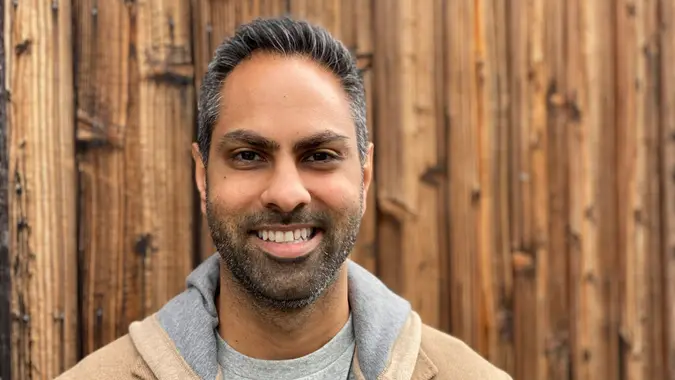7 Things You Must Do When Your Savings Reach $25,000

Commitment to Our Readers
GOBankingRates' editorial team is committed to bringing you unbiased reviews and information. We use data-driven methodologies to evaluate financial products and services - our reviews and ratings are not influenced by advertisers. You can read more about our editorial guidelines and our products and services review methodology.

20 Years
Helping You Live Richer

Reviewed
by Experts

Trusted by
Millions of Readers
According to the Northwestern Mutual Planning & Progress Studies, the average American has $65,100 in personal savings, excluding retirement savings. But the wealthiest households are such rich outliers that the average isn’t representative of the norm.
The median saver has closer to $5,000 in the bank.
So if you have $25,000 saved, you’re on the good side of the middle by a comfortable margin. That’s a lot of cash to leverage — but also a lot to protect.
Here’s how to utilize, preserve and grow the impressive financial cushion you’ve built.
Put $25,000 in Perspective
If you make $100,000 a year, $25,000 is about three months’ salary — before taxes. That’s the bare minimum for standard rainy day savings.
“General financial planning principles recommend that you should have at least three to six months of living expenses in your emergency fund,” said Eric Mangold, founder of Argosy Wealth Management, an independent financial planning firm with over $1.2 billion in assets under management. “Some folks feel comfortable having more, but I certainly would not go under three months.”
But even for those who make $40,000 a year, $25,000 would be enough only for a healthy six-month fund with five grand to spare. It’s dangerously easy to blow through $5,000, which is why milestone numbers can breed false confidence. If you treat $25,000 like it’s all the money in the world, you’ll spend it like it won’t run out.
Go Yield Shopping
Rising interest rates are bad for borrowers but great for high-balance savers — which you officially are. The current environment provides a unique opportunity for investment-grade yields while retaining full liquidity and the security of FDIC insurance — but only if you plant it where it can grow.
For example, the USB Direct high-yield money market account offers a 5.25% APY compounded daily, which would add $1,312 to your stack in a single year if you’ve got $25,000 to start.
On the other hand, a Chase savings account with a 0.01% yield compounded monthly would pay you just $2.50 over the same period.
Invest In Professional Guidance
Although $25,000 isn’t infinite, it’s certainly not insignificant — anyone earning less than six figures gets sufficient emergency savings with cash to spare. If those with $40,000 salaries scaled down to a more modest four-month emergency fund, they’d have $11,680 left over to play with. That kind of money justifies investing in professional help to manage it.
, a business funding and tax firm.
A professional planner can help you order your priorities now that you have the opportunity to pay down debt, make extra payments toward your mortgage principal, start a college fund or open a brokerage account.
“They can help you navigate more complex investment opportunities and strategies tailored to your financial situation,” Dallow said.
Start a Retirement Fund or Expand the One You Have
Unless the non-emergency portion of your savings is already earmarked for established goals, at least some of it should go to your nest egg.
“If you’re not saving up for something like a down payment or a new car, you probably don’t need more than $25,000 in an emergency fund,” said Melanie Musson, finance and insurance expert with InsuranceProviders.com. “When your savings reach $25,000, it’s probably time to allocate future savings to investments.”
She recommends maxing out your retirement account — if you have one.
“If you’re not saving for retirement, consider moving those funds into a retirement account, like a Roth IRA,” said Bethany Hickey, personal finance expert and banking and loans writer with Finder.com.
Consider Investing In Property
If you’re able and willing to put all or most of it in play, $25,000 could purchase life-changing investments. Depending on your larger financial profile, it might be enough for a down payment on a home.
“If homeownership aligns with your goals, explore the possibility of buying property,” Dallow said. “Alternatively, research investment opportunities that could provide passive income.”
If you play your cards right, that home could be both a residence and an income stream.
“Consider house hacking, particularly if you’re a young investor,” said Dennis Shirshikov, head of growth at real estate investing firm Awning.com. “This involves buying a multi-unit property, living in one unit, and renting out the others.”
When done correctly, house hacking lets you use your tenants’ rent to pay your mortgage — perhaps with a little to spare — so you can dedicate your housing budget to other investments.
Expand Your Savings and Add Equity Investments
If you’re not ready or able to take the plunge into real estate, you should at least amplify your savings with term-based vehicles that pay higher yields, but that tie up your money for fixed periods.
“You can diversify your savings portfolio with things like certificates of deposit, bonds and real estate funds,” Hickey said.
If you can tolerate more risk, you can pursue even greater gains in the stock market.
“High-yield savings accounts and CDs are fine choices for the cautious, but index funds are a better choice with minimal long-term risk and excellent overall returns,” said Ann Martin, director of operations of CreditDonkey.
Spread the Wealth (and Take the Deduction)
You have to take care of yourself before you can help others, but with $25,000 in the bank, you’re running out of excuses not to do well by doing good.
“If inclined, start charitable contributions,” Dallow said. “Giving back not only benefits others, but can also have potential tax advantages.”
 Written by
Written by  Edited by
Edited by 
























